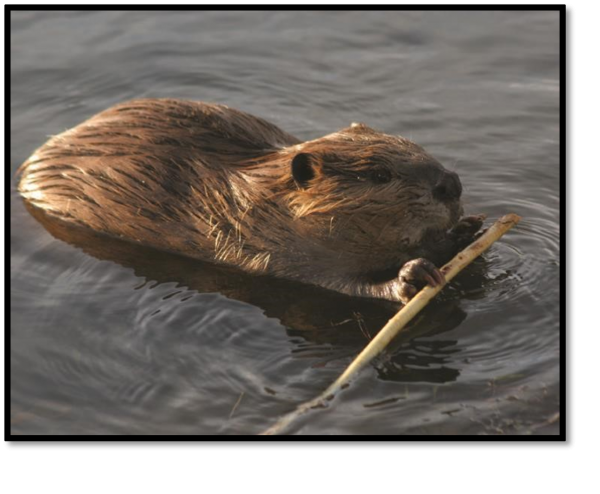Beaver
 Beaver
Beaver
Castor canadensis
- The beaver is the second-largest rodent in the world and can weigh up to 80 lbs., though the average weight is 40-50 lbs.
- They are aquatic rodents and have large, flat, scaled tails that are very distinctive.
- Beaver incisors also grow continuously, so they are not worn down by wood chewing.
- Beavers powerful hind legs and webbed hind feet propel them in the water.
Population: Stable beaver populations are maintained in suitable habitats throughout Wisconsin while at the same time providing trapping and viewing recreation and limiting human-beaver conflicts and impacts to resources. Beaver shooting and trapping is legal year-round without a DNR license on your own property to resolve beaver conflicts.
Habits: They are one of the only animals that modify habitat to suit their needs. This often includes building dams and lodges which they use for protection, shelter, and for water access to nearby woodlands. Beaver dams provide many positive environmental benefits such as decreasing the impacts of floods, recharging aquifers, filtering water, and creating wetland habitats used by many other species of wildlife. However, beaver and their dams can cause damage by removing trees and other vegetation, flooding property, cropland, and roads. There are a variety of strategies that can be used to manage nuisance beavers.
Beaver are most active during the fall, collecting branches and small trees. Beaver will stockpile this vegetation near their lodge, called a “cache”, and rely on this food source during the winter.
Beavers live in extended family groups (colonies) that usually consist of the adult pair, the current year’s offspring (kits), and young from the previous year (yearlings). Occasionally, nonbreeding individuals more than 24 months of age may remain with the family group.
Diet: Beavers prefer to eat woody species such as willow and aspen (aka poplar or popple), but will take a variety of other species for either food or building material.
Mating and Young: Beavers can start to reproduce around 21 months. Beavers are monogamous and each colony (extended family group) produces a single litter per year. Breeding typically occurs during January– March at middle latitudes and gestation lasts 100–110 days. Litters range in size from 1 to 9 and typically average 3–4 young (Hill 1982; Baker and Hill 2003). Variation in litter size appears to be affected by habitat quality, and the age and weight of the mother (Baker and Hill 2003).
Information from: https://dnr.wi.gov/files/PDF/pubs/wm/WM0610.pdf and https://dnr.wi.gov/topic/WildlifeHabitat/furbearers.html
To download this information: Click Here
